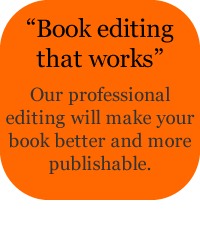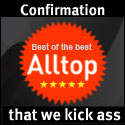In this article you will learn how to apply a strategy used to build successful companies to create popular and successful books. The strategy will avoid you writing books that have no defined market or readership.
Lean Start Up is a business strategy built around the concept of building a business by listening to potential customers and creating products that fulfil their needs. Lean Start Up insists that businesses must listen and learn from their customers, then use this knowledge to mould their products to fit customers requirements.
Ash Maurya is a businessman applying and teaching the Lean Start Up methodology. So when he decided to write his book, Running Lean, it made sense to apply the Lean Start Up principles to his writing.
Below is an extract from Running Lean that explains how he did just this…
How Ash Maurya wrote Running Lean
Customer Pull
Writing a book was never in my plans. I started my blog simply because I had more questions than answers. Along the way, a few of my blog readers started suggesting that I turn my blog posts into a book. I knew writing a book (even from blog posts) is a massive undertaking so while I was flattered by the requests, I did nothing at first. After about a dozen such requests, I decided to explore further.
Understand Problem
I called these readers up and asked them why they wanted me to write a book. Specifically I asked what would be different about this book from what was already on my blog, Eric Ries’s blog, or Steve Blank’s book? (existing alternatives)
From these interviews, I learned that, like me, they too were struggling taking Customer Development and Lean Startup techniques to practice (problem) and viewed my blog posts as a “step-by-step” guide for applying these techniques from the ground up.
While Eric Ries succinctly captures the validated learning loop with Build/Measure/Learn, what people wanted wanted to know was how to string one or more of these learning loops into a workflow for taking a product from idea to launch to Product/Market Fit.
Define Solution
With that knowledge, I spent a day building a demo. It was a landing page with a table of contents, a title, a blank book cover image, and a price.
I called up the same readers and asked them if I were to write this book would they buy it? Their feedback gave me a strong signal to move forward and helped me define the solution. I ended up refining the original title, price, and table of contents.
While encouraging, I still didn’t want to write a book for just a dozen or so readers so I announced the book on my blog and others helped spread the message (channel testing). Once I hit 1,000 potential buyers, this became a problem worth solving for me. My rationale for this thinking was to at least cover my costs for
writing this book using a simple back-of-the-envelope calculation.Validate Qualitatively
Writing a whole book was still a massive undertaking so I needed to build the smallest thing possible to start learning from customers (a minimum viable product).
I took the table of contents and turned it into a slide deck with the same outline and a few bullet points under each topic. I announced a free Running Lean workshop and got 30 people interested. I launched the first workshop with 10 people who helped me test and refine the content. Based on the success of the first workshop, I ran more workshops and started charging for them. With each workshop, I continually tweaked the slide deck content for better flow.
Once I understood the solution, I started writing. Here again, instead of writing the whole book in isolation, I contacted my potential prospects from the teaser page (some of who were growing impatient) and told them I’d be writing and releasing the book iteratively: Rather than waiting six months to get the book, if they pre-ordered the book, they would get 2 chapters of the book every 2 weeks in a PDF format.
Enough people agreed to this arrangement which allowed me to further test and refine the content iteratively with my early adopters. The early adopters were driven by the content alone and didn’t care about typos or an iPad/Kindle version. Others chose to wait for the “finished product”.
Verify Quantitatively
As of this writing, the book is now “content-complete” and almost ready for a full launch.
Up until now, my focus has been solely on content. I have deferred things like designing a book cover, testing the book sub-title, or researching print/eBook options all of which I am doing now (Right Action, Right Time).
While I’ve always been prepared to self-publish this book, I’ve been contacted by two major publishers that are currently reviewing the manuscript. I asked them if my model for writing and selling the book so far would be a deal-breaker. On the contrary, they wished more authors wrote their books this way.
By selling the book on my own and demonstrating early traction, I was proving there was a market for this book and helping mitigate market risk for a publisher. As with building a web-based product, the ideal time to attract external resources is after Product/Market Fit which ironically may or may not be the right action at that time. The final decision to go the publisher route or self-publish is still being determined – economics, reach, and time to market are all factors.
Next Step…
If you are interested in using Lean Start Up methodology I would suggest you start by reading Ash Maurya’s blog. I would also highly recommend his book Running Lean as an excellent pragmatic example of how to apply the Lean Start Up methodology.
I would like to thank Ash Maurya for giving permission for this extract to be used.



